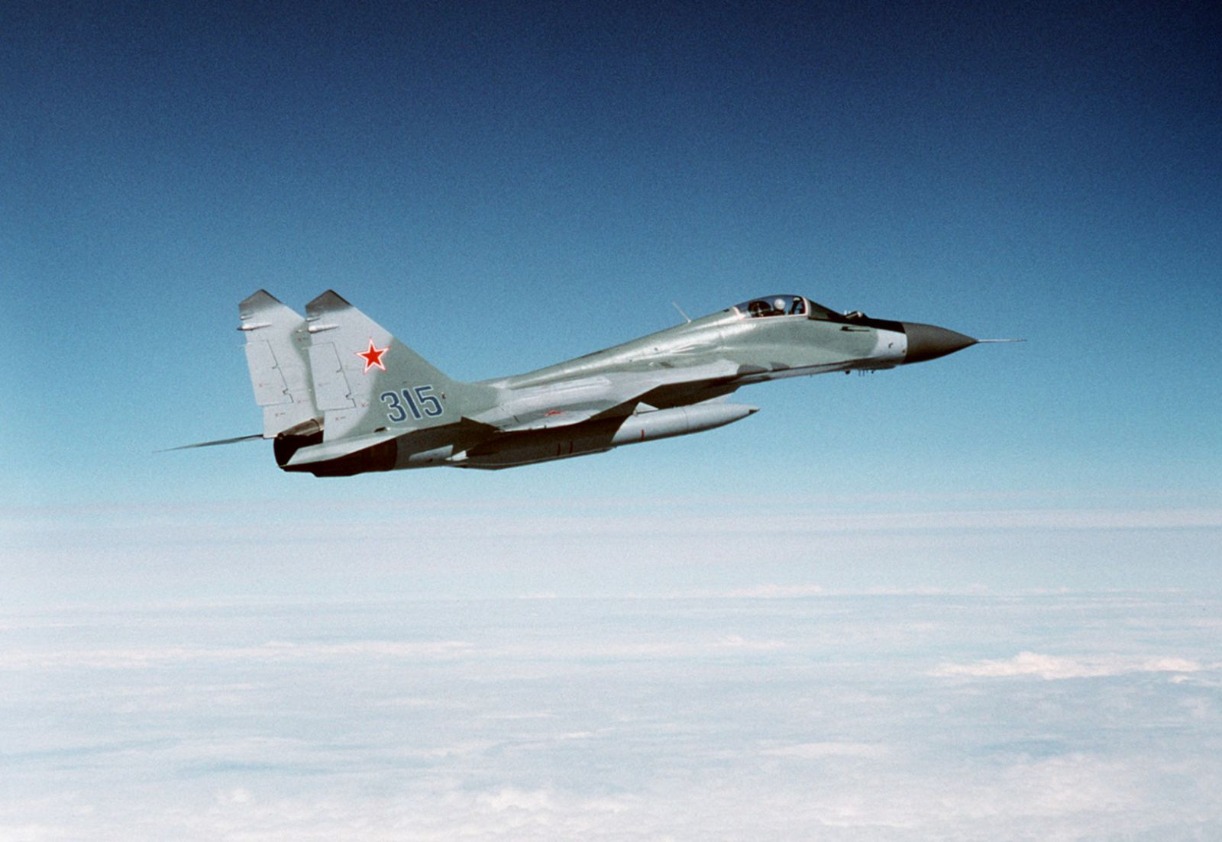Russia's MiG-29 Fighter Was Actually Purchased by the U.S. Military
The U.S. purchased 21 MiG-29 fighter jets from Moldova in the late 1990s to prevent these advanced Soviet-era planes from falling into Iranian hands. Originally designed to rival America’s F-15 and F-16 during the Cold War, the MiG-29 "Fulcrum" featured impressive innovations, including lightweight aluminum-titanium alloys and high-angle-of-attack capabilities.
What You Need to Know: The U.S. purchased 21 MiG-29 fighter jets from Moldova in the late 1990s to prevent these advanced Soviet-era planes from falling into Iranian hands. Originally designed to rival America’s F-15 and F-16 during the Cold War, the MiG-29 "Fulcrum" featured impressive innovations, including lightweight aluminum-titanium alloys and high-angle-of-attack capabilities.

-These jets also included helmet-mounted cueing systems that initially surpassed U.S. technology.
-By acquiring the planes, the U.S. thwarted Iran’s efforts to reverse-engineer the platform, securing valuable intelligence on Soviet technology. Israel also accessed the MiG-29 for training and analysis, finding it challenging in combat but advantageous in specific functions.
Why the U.S. Bought Twenty-One Mig-29 Fighters:
When the U.S. first got eyes on the USSR’s MiG-29 platform during the Cold War, it was clear Soviet engineers were developing a counterpart to American fourth-generation platforms. Satellite imagery depicted a sleek and advanced looking fighter jet, concerning U.S. officials. In fact, the MiG-29 was just as capable, if not more so in certain areas, as the American-made F-15 Eagle and F-16 Fighting Falcon.
While the USSR was no longer a concern following the culmination of the Cold War, these formidable jets left behind and now in Moldovan territory were still in play. U.S. officials were particularly worried that another adversary could get its hands on these fourth-generation fighters-namely, Iran. In order to thwart the potential reverse-engineering that could take place to provide Tehran with cutting-edge fighter technology, the U.S. purchased these warplanes.
When the Islamic Republic of Iran first put out feelers to procure the left behind MiG-29s from Moldova in the late 1990’s, the U.S. stepped into action. Then-Defense Secretary William S. Cohen announced that America would purchase twenty-one of these jets from the ex-Soviet state, explaining that they were “on the shopping list.”
This transaction was the latest in an effort spearheaded by the state department to ensure that the remnants of the Soviet’s weapons arsenal was secured. This MiG purchase did not mark the first time the U.S. had previously bought technology in order to ensure its hostile adversaries did not obtain it first.
In 1994, the U.S. purchased highly enriched uranium from Kazakhstan, which Iran reportedly had designs on according to the Los Angeles Times.
Israel also gained access to the MiG-29 platform following the collapse of the USSR. The Jewish state wanted a better idea of what they would be up against if an all-out war with the Islamic Republic would erupt. Once acquired, the Israelis determined that the MiG-29 was a very challenging plane to dogfight with unless flown by a highly experienced pilot.

Unlike its Western counterparts, the Soviet fighter lacked advanced accouterments. Despite this fact, the jet was still deemed superior in other areas.
For instance, some reports suggested that the Soviet plane’s helmet-mounting cueing system was better than anything equipped in the American or Israeli arsenals when it was first purchased.

What Made the MiG-29 so Important to Acquire?
The MiG-29 “Fulcrum,” designed to replace the Soviet’s aging MiG-23 fighter, featured advanced capabilities that demonstrated the USSR’s aerial progress. The Fulcrum was one of the first airframes produced in the USSR to extensively use lightweight aluminum titanium alloys.
This metal reduced the overall weight and complexity of the fighter. Additionally, these fighters achieved high-angle-of-attack capability due to their widely flared wing leading edge root extension. Nations across the globe recognized the impressive traits embodied by the MiG-29 and set out to acquire the fighter.
Export models of the Fulcrum were sold to India, Iran, East Germany, Peru, Iraq, Poland, Sudan, Syria and others.
About the Author: Maya Carlin, Defense Expert
Maya Carlin, National Security Writer with The National Interest, is an analyst with the Center for Security Policy and a former Anna Sobol Levy Fellow at IDC Herzliya in Israel. She has by-lines in many publications, including The National Interest, Jerusalem Post, and Times of Israel. You can follow her on Twitter: @MayaCarlin. Carlin has over 1,000 articles published over the last several years on various defense issues.
Image Credit: Creative Commons and/or Shutterstock
From the Vault
F-35I Adir: Israel Has a Special Stealth Fighter Even America Doesn't Fly


